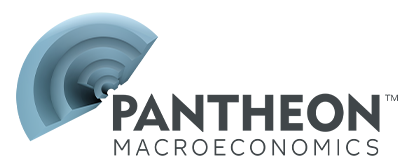Pantheon Publications
Below is a list of our Publications for the last 5 months. If you are looking for reports older than 6 months please email info@pantheonmacro.com, or contact your account rep.
Please use the filters on the right to search for a specific date or topic.
Daily Monitor Duncan Wrigley
- H1 went quite well, all things considered, but China still wants to project a strong image to the world.
- China’s new residential sales weakened further in the first four weeks of July.
- The new child-rearing subsidies are a step in the right direction, but small by international standards.
- Deputy Governor Uchida said on Wednesday that the US-Japan tariff deal reduces uncertainty...
- ...hinting that the BoJ will revise up its growth and inflation outlook next week.
- The July composite flash PMI was steady, though services and manufacturing activity diverged.
- We are raising our growth and inflation forecasts for Japan, after yesterday’s relatively benign trade deal.
- The BoJ is likely to resume rate hikes in October, as it forms an initial view on the 2026 wage outlook.
- USDJPY is likely to strengthen moderately; but political risk was evident in the 40-year JGB auction yesterday.
- .China’s Q2 real GDP growth weathered the tariff war, as exports to non-US markets picked up…
- …But nominal GDP growth was the lowest since Q4 2022, as deflation steepened.
- Consumption is likely to remain sluggish, with wage growth slowing in Q2.
- China’s broad credit growth rose in June, but mainly thanks to government-bond issuance.
- The rise in corporate borrowing is distorted by the local-government debt swap; it’s likely still sluggish.
- M1 jump is hopeful but may prove a blip given the lack of supporting data elsewhere pointing to an upturn.
- China’s producer deflation is entrenched, but the worsening in June was due to temporary factors.
- Auto prices rose, after firms pledged faster supplier payments; other sectors are making supply policies.
- Weak core consumer inflation is indicative of poor demand; all eyes on the end-month Politburo meeting.
- Japan’s wages took a big knock from a bonus plunge in May, as exporters’ profits were hurt by the tariff war.
- The headline large-manufacturer Tankan was oddly steady in Q2, despite the tariff war.
- Consumption still looks soft, despite one-off factors boosting May’s household spending data.
- The Caixin PMI rebounded more strongly than the official manufacturing index in June…
- …Deflation pressures are festering, however, likely forcing regulatory curbs on excessive competition.
- Korea’s manufacturing PMI is starting to rise from its sickbed, now the election has reduced political risk.
- The PBoC on Friday hinted it saw less need for a near- term monetary policy boost than three months ago.
- The June official manufacturing PMI improved, thanks to policy support and an easing in tariff tensions.
- The construction PMI ticked up at last, but it’s too soon to celebrate; the hard data pointed to slowing.
- Japan’s June headline flash manufacturing index was lifted by output, but demand remained subdued.
- Cost pressures are easing only slowly, with global oil prices a key risk.
- The service sector continues to be bolstered by tourism, notably surging Chinese visitor numbers.
- Japan’s exports fell in May for the first time since September, hit by US tariff hikes.
- Still, exports held up better than the market expected, as exporters cut prices and shipments to the EU rose.
- The bond market faces risks from July’s upper house election, despite the BoJ’s supportive policy tweak.
- China’s solid retail sales figure for May was boosted by earlier online retail sales and subsidy policies.
- Manufacturing and infrastructure investment growth are slowing; expect the policy banks to step up soon.
- Policymakers are likely to opt for a mid-year top-up and refinement of targeted support; no big stimulus.
